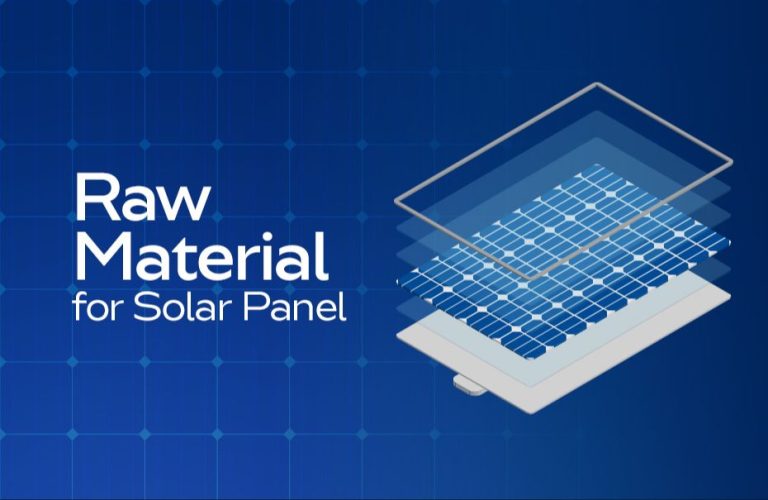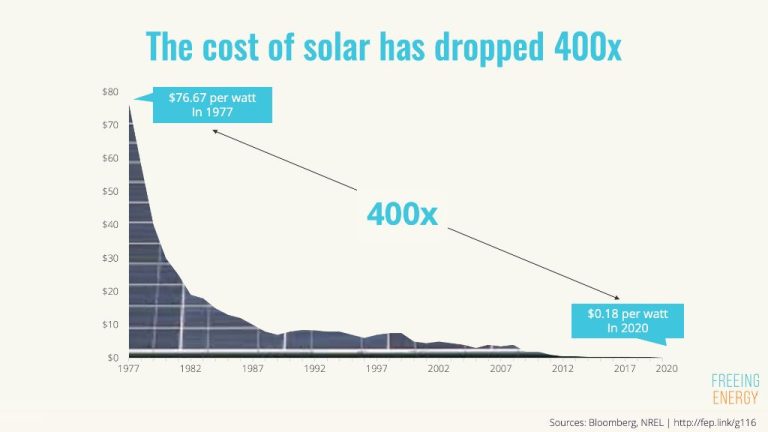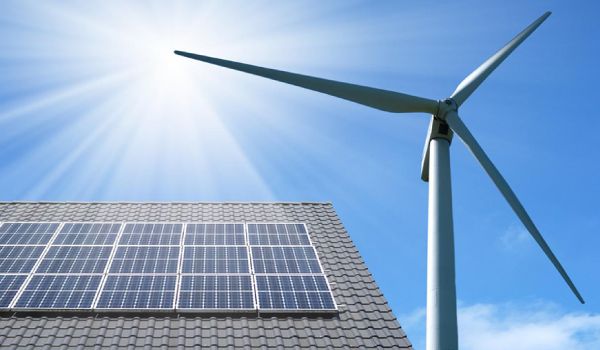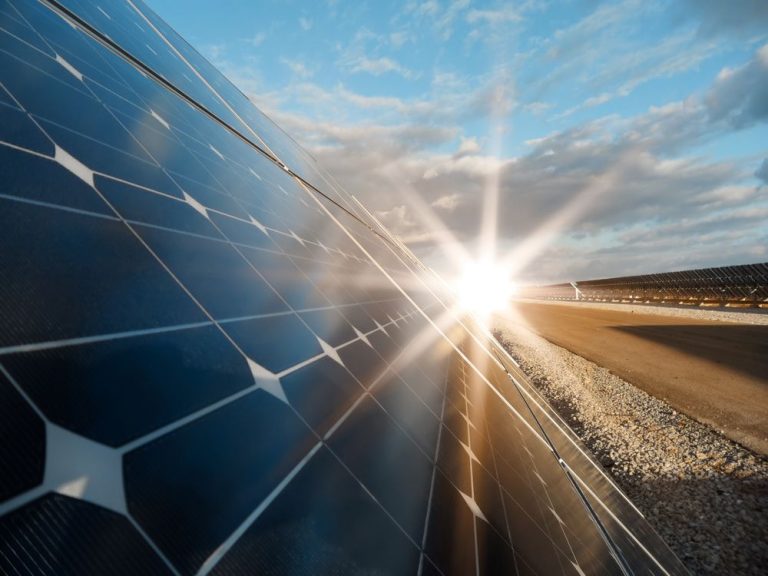What Is The Most Efficient Solar Panel?
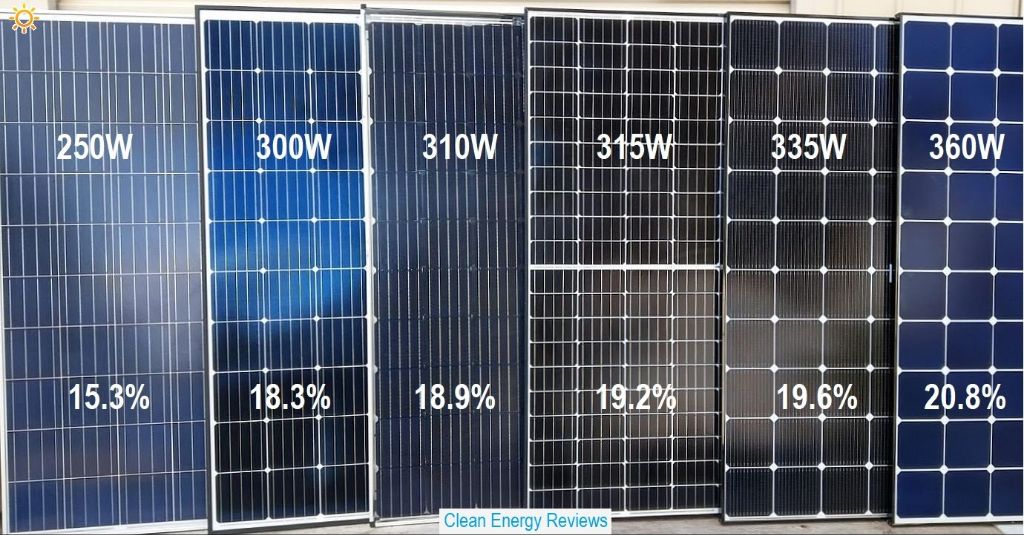
Solar panel efficiency is an important factor to consider when evaluating different solar panel options. At its core, a solar panel’s efficiency refers to how much of the sun’s energy striking the panel is converted into usable electricity. The more efficient a solar panel, the more electricity it can generate from the same amount of sunlight. This allows homeowners and businesses to meet their energy needs with fewer solar panels overall.
The history of solar panel efficiency is marked by steady improvements over the decades. In the 1950s, the first commercial solar panels only had efficiencies of around 6%. But by the 1970s, efficiencies climbed to over 10%. In the last 20 years, increases in solar cell efficiency have slowed somewhat as researchers push up against theoretical efficiency limits. But incremental gains of a few percentage points still occur periodically. The most efficient solar panels today have efficiencies approaching or exceeding 20%.
Understanding solar panel efficiency trends and the latest technological advancements can help consumers make informed decisions when shopping for a solar energy system. This article provides a deeper look at how efficiency is measured, the key factors driving efficiency, where the most efficient panels stand today, and what future advances may be possible.
How Solar Panel Efficiency is Measured
Solar panel efficiency is determined by measuring the percentage of solar energy from sunlight that is converted into electricity by the photovoltaic cells in the panel. This metric is known as the conversion efficiency and is a key specification used to evaluate and compare different solar panels.
Conversion efficiency is measured under Standard Test Conditions (STC) in a laboratory setting. STC specifies an irradiance of 1000 W/m2, a cell temperature of 25°C, and an air mass of 1.5. These standardized conditions allow for an apples-to-apples comparison between panels from different manufacturers. The conversion efficiency rating is calculated by dividing the electrical power output from the panel by the solar irradiance input (https://eepower.com/technical-articles/how-is-solar-panel-efficiency-measured/).
However, lab test conditions rarely match real-world operating conditions. Factors like panel temperature, angle of irradiance, and spectral content of light all impact the conversion efficiency. So a panel rated at 20% efficiency in the lab may only operate at 15% efficiency when installed on a rooftop. Other metrics like performance ratio help compare real-world energy yield.
Key Factors in Solar Panel Efficiency
There are several key factors that determine the efficiency of a solar panel:
Panel Materials and Cell Type
The materials used in solar cells directly impact efficiency. Silicon is the most common material, with monocrystalline silicon cells typically having efficiencies around 15-20% and polycrystalline silicon in the 13-16% range. More exotic materials like gallium arsenide can achieve over 30% efficiency but have higher costs (1).
Temperature Effects
Solar panel efficiency decreases as temperature increases. On hot days, efficiency can drop 10-25% relative to ratings taken at standard test conditions. Proper airflow and cooling is critical for maintaining efficiency in warm climates (2).
Orientation and Shading
Efficiency drops when solar panels are not pointed directly at the sun. Even a little bit of shading from trees or buildings can drastically reduce output. Careful site planning and tilt/azimuth adjustments are required to maximize efficiency (3).
Age/Degradation Over Time
Most solar panels lose around 0.5-1% of their rated power output each year as materials degrade. Careful maintenance can reduce this, but after 25+ years significant replacements may be required (1).
Most Efficient Solar Panel Materials
When it comes to efficient solar panel materials, there are two main categories: crystalline silicon and thin film. Crystalline silicon, such as monocrystalline and polycrystalline silicon, has long been the dominant material for solar panels. It boasts both high efficiency rates and proven reliability over decades of testing and use. Monocrystalline silicon solar panels tend to have slightly higher efficiency rates than polycrystalline, typically 15-20% versus 13-16%. However, polycrystalline silicon is less expensive to produce.
Thin film solar panels utilize various semiconductor materials layered onto substrates like glass, stainless steel or plastic. Materials like cadmium telluride (CdTe) and copper indium gallium selenide (CIGS) have become popular thin film choices, with lab efficiency ratings around 22%. While thin film does not yet match crystalline silicon in real-world application, it tends to better tolerate high temperatures and indirect sunlight. Thin film solar also allows for flexible panel options.
On the horizon, advanced materials like perovskites and organic PV promise even greater solar efficiency potential. Perovskites in particular have progressed rapidly in lab testing, achieving efficiency rates as high as 25%, though durability challenges remain. Continued research and product development is expected in advanced solar materials to push efficiency boundaries further.
Top Commercial Solar Panels by Efficiency
When examining solar panel efficiency, it’s important to look at lab testing results as well as real-world performance. Here are 5 of the top commercially available solar panels based on lab efficiency ratings:
- SunPower Maxeon 5: 22.8% efficiency. This monocrystalline panel uses SunPower’s Maxeon cells with rear contact design for increased efficiency.1
- LG NeON R: 22.3% efficiency. LG’s monocrystalline Czochralski cells achieve high efficiency while maintaining cost effectiveness.2
- REC Alpha: 21.7% efficiency. REC’s heterojunction cells with passivated emitter rear contact increase power density.2
- Panasonic HIT: 21.6% efficiency. Combining monocrystalline silicon with amorphous silicon, Panasonic’s HIT panels offer high performance.1
- Solaria PowerXT: 21.4% efficiency. Advanced cell architecture and patented manufacturing process boosts efficiency.1
In real-world conditions, top performers like LG and Panasonic often have “performance ratios” around 85-90%, meaning they produce about 85-90% of their rated lab efficiency when installed. This compares to 80-85% for standard panels. Proper installation to maximize sun exposure is key to achieving high real-world solar efficiency.
Residential vs Utility-Scale Efficiency Needs
Efficiency priorities differ between residential and utility-scale solar based on the application. For homes and businesses, space constraints mean panel efficiency is crucial to maximize production given limited roof or land area. Though cost is still a key factor for residential, performance tends to be more important since generation potential is capped. As a result, homeowners may opt for premium high-efficiency panels like SunPower’s 22.8% efficient panels [1] or LG’s NeON series up to 22.3% [2] to maximize production.
For utility-scale projects generating hundreds of megawatts, space is abundant so maximizing efficiency is less critical. The priority is driving down the levelized cost of energy through economies of scale. As a result, these facilities primarily utilize cheaper but slightly less efficient panels from 12-19% efficiency like First Solar’s Series 6 thin film or Canadian Solar’s HiKu polycrystalline silicon modules. The low cost offsets the modest reduction in efficiency. According to one analysis, utility-scale PV has inherent cost advantages over residential making it more economical at scale despite modestly lower panel efficiency [3].
Improving Efficiency via Panel Orientation
Optimizing the angle and azimuth orientation of solar panels can significantly improve their efficiency and energy production. The optimal solar panel angle is typically equal to the latitude of the installation location. Facing panels directly south (azimuth of 180° in the northern hemisphere) maximizes production. According to Energysage, south-facing panels tilted between 15-40° perform best https://www.energysage.com/solar/solar-panel-performance-orientation-angle/. Deviations from the optimal orientation result in efficiency losses, especially from suboptimal azimuth direction.
Tracking systems that follow the sun’s daily and seasonal movement can further improve efficiency. Single-axis trackers rotate panels along one axis to follow the sun east to west. Dual-axis trackers also tilt panels throughout the day and year for maximum sunlight exposure. Trackers boost production by 20-30% versus fixed tilt systems, but have higher costs and maintenance needs. For residential installs, the extra energy gain often does not justify the added complexity and expense of trackers.
Future Solar Panel Efficiency Projections
Solar cell technology continues advancing rapidly, with new materials and designs emerging from labs every year. The latest lab records have reached over 47% efficiency under concentrated sunlight. Several technologies on the horizon aim even higher, with practical limits around 60-70% efficiency.
Commercializing these advanced designs presents challenges, however. The record-setting cells use expensive materials like gallium arsenide or require costly manufacturing techniques. Scaling up production can take decades and will initially come at a high price premium.
More modest gains may arrive sooner for mass market panels. For example, perovskites have reached 25% efficiency in labs and can layer on top of silicon cells. Some analysts expect perovskite-silicon tandems to become commercial by 2025, boosting mainstream panel efficiency to around 30%. Further out, emerging thin-film designs like CIGS have potential to reach 35% at large scale production.
While theoretical limits cap individual solar cell efficiency, panels can surpass this by stacking cells or concentrating sunlight. Still, commercial viability depends on manufacturing costs. Striking the optimal balance between high efficiency and affordable production costs remains an ongoing challenge.
Maximizing System Efficiency Beyond the Panels
While solar panel efficiency is critical, there are other factors that play an important role in overall system efficiency. Two key considerations are inverter efficiency and avoiding shading.
High efficiency inverters convert DC electricity from the solar panels into usable AC power with minimal energy losses. Microinverters attached to each panel can maximize production compared to string inverters for the whole array. Quality inverters from reputable brands can achieve 95-98% efficiency ratings (1).
Shading even a small portion of a solar panel can disproportionately reduce its output. Careful system design to avoid shading from structures, vegetation or other obstructions is crucial. For residential systems, installing panels on south-facing rooftops is ideal for maximizing sunlight exposure (2).
Regular system maintenance also ensures optimal performance over time. Checking for debris, damage, and inverter operation annually can prevent efficiency decreases. Having a solar company perform diagnostic tests and corrections as needed helps keep the system running at its rated capacity (3).
With high efficiency components, proper siting and ongoing maintenance, the overall solar energy system can deliver maximized clean power generation beyond just the solar panels alone.
(1) https://arka360.com/ros/optimizing-solar-system-performance-key-factors-for-installers-to-consider/
(2) https://ecogreenlove.com/2020/05/28/solarpanel-efficiency/
(3) https://cleanpowerstore.com/blog/maximizing-solar-system-efficiency-with-hoymiles-microinverters/
Conclusion
In summary, the most efficient solar panels on the market today typically use monocrystalline silicon cells and achieve efficiencies of 22-24%. The highest lab efficiencies have been achieved by multi-junction cells using advanced materials like gallium arsenide, reaching over 40% efficiency. However, these cutting edge options are prohibitively expensive for most applications.
While panel efficiency is important, it’s not the only consideration – residential systems may favor lower efficiency but cheaper panels to maximize affordability, while utility-scale systems can accommodate more expensive but higher efficiency options since they offset greater energy consumption. Beyond panel efficiency, factors like panel orientation, shading, and inverter selection can also impact overall system efficiency and energy output.
The key takeaway is that the “most efficient” solar panel depends on the context and application. For most homeowners and businesses, high-end monocrystalline silicon panels balance efficiency and cost-effectiveness quite well. And continuing R&D promises even more gains in commercial panel efficiency in the years ahead.

